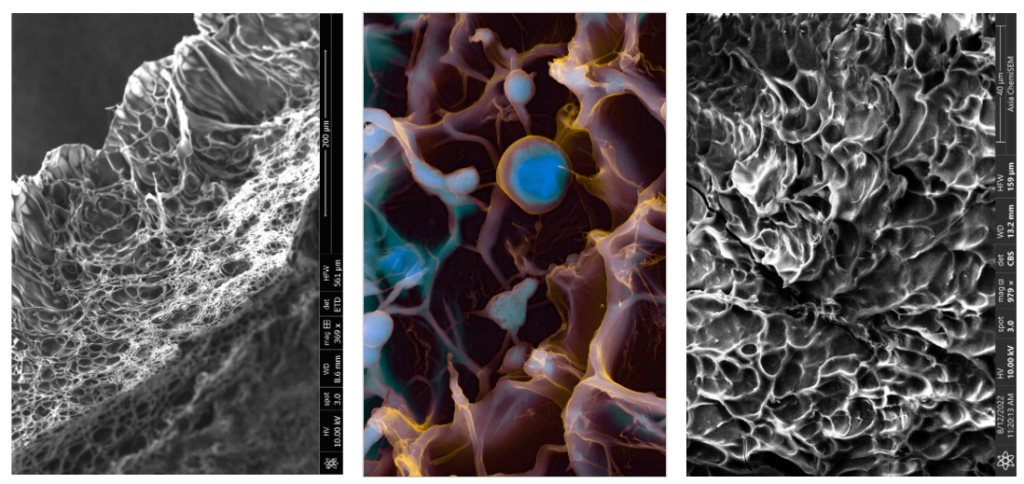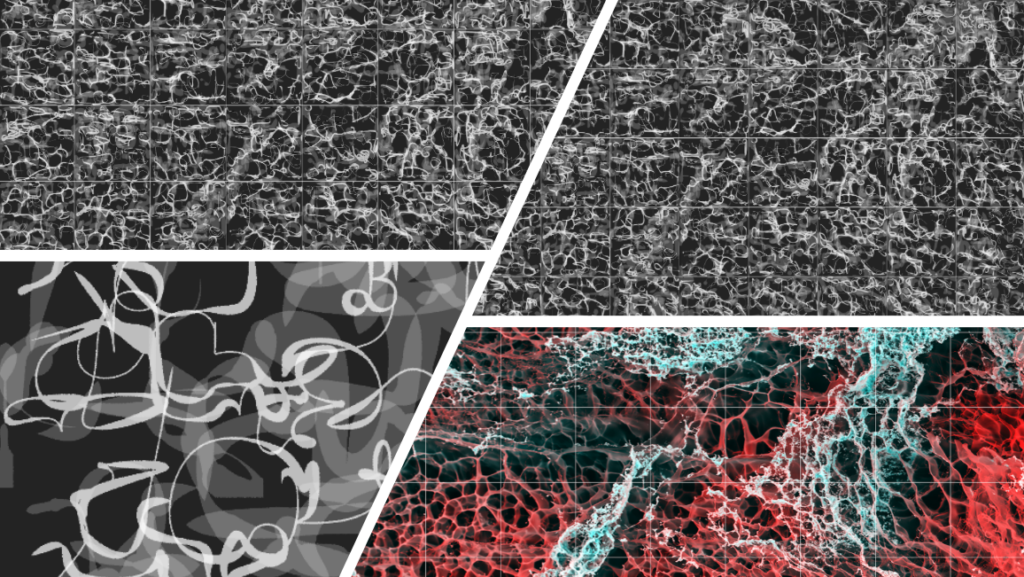Artistic Research
Labor
The “Labor” project is an artistic collaborative robotic-painting research featuring an installation by Liat Grayver (EACVA Artistic Director) and Danil Berio (EACVA – Draw-Lab Development Lead), exploring the dual meanings of labor—childbirth and manual work—while addressing the historical marginalization of women’s bodies, work, and health. In collaboration with Prof. Inge Hermann from ETH Zurich’s Nanoparticle Systems Engineering Lab, the project presents a live robotic installation alongside an artist’s atelier configuration. Grayver and Berio will engage in a creative performance, interacting with a robotic arm to create a large wall installation composed of numerous small paintings. Together, these works will form an abstraction of an electron microscope image of human placenta cells.
“Labour” delves into the concept of the “mindful hand” – the inherent intelligence found in manual labor and social engagement. It serves as a poignant reminder of the lack of discussions surrounding bodily intelligence, symptomatic of our contemporary society. This void is exacerbated by the pervasive influence of the digital realm and the increasing dematerialization of human activities, compounded by the rise of AI. It signifies a shift in our social dialogue from practical knowledge (“knowing how”) to mere anecdotal understanding (“knowing that”). The title “Labour” highlights the historical divide between workers and masters but also explores its modern-day implications in our computational society. The artwork prompts reflection on the often-overlooked contributions of enslaved servants and underscores the concept of women embodying “surrogate humanity” through their invisible labor — The creation and sustenance of life.
The live installation will produce a large-scale, wall-mounted artwork depicting electron microscope images of a human placenta. Composed of multiple tiles, each tile will be individually painted by a robot operated by Grayver and Berio over a five-day period in a live setting. While each tile will feature a unique generative composition, together they will form an abstracted image and structure of the placenta when viewed from a distance.
Goals
- Create an interactive human-machine performance to highlight the division of labor.
- Construct a spatial installation that transcends traditional flat imagery, incorporating numerous small physical objects. This monumental work will be proportionate to the scale of the human body, enriching the viewer’s experience with notions of space and time within the exhibition setting.
- Initiate critical discussions concerning the impacts and implications of technology on the human body, exploring the balance between natural/physical elements and artificial/mechanical ones.
- Underline the theme of women’s health in contemporary research
Technical Development:
- Develop and categorize a collection of computational techniques for generating gestural brushstrokes, which can be used in future robotic art projects. This may involve collecting data from human gestures but is not limited to it.
- Investigate methods for deconstructing paintings into layers of strokes.
- Customize painting techniques using materials developed in collaboration with the nano engineering lab at ETH Zurich, aligning with their research.




